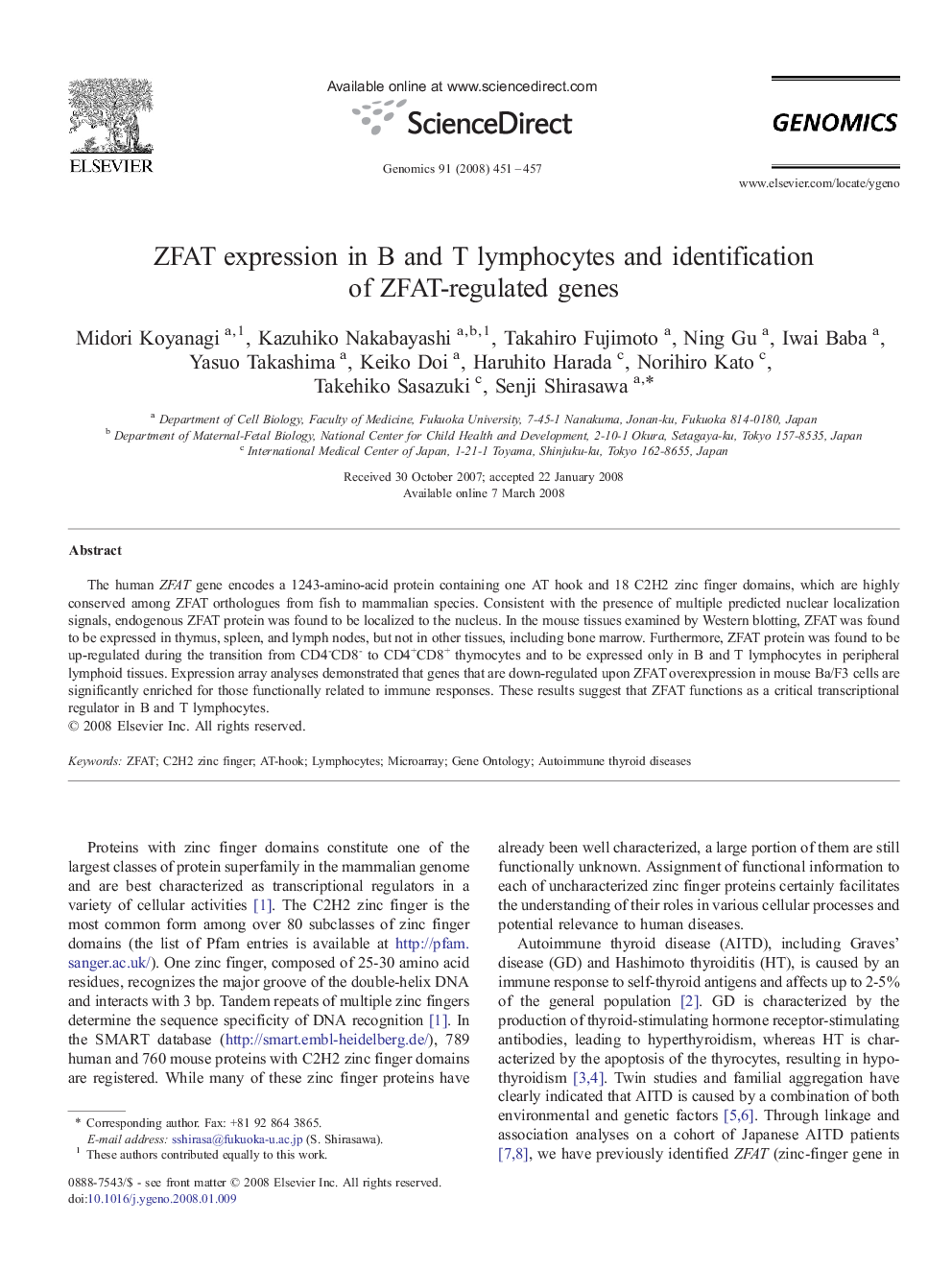| Article ID | Journal | Published Year | Pages | File Type |
|---|---|---|---|---|
| 2821510 | Genomics | 2008 | 7 Pages |
The human ZFAT gene encodes a 1243-amino-acid protein containing one AT hook and 18 C2H2 zinc finger domains, which are highly conserved among ZFAT orthologues from fish to mammalian species. Consistent with the presence of multiple predicted nuclear localization signals, endogenous ZFAT protein was found to be localized to the nucleus. In the mouse tissues examined by Western blotting, ZFAT was found to be expressed in thymus, spleen, and lymph nodes, but not in other tissues, including bone marrow. Furthermore, ZFAT protein was found to be up-regulated during the transition from CD4-CD8- to CD4+CD8+ thymocytes and to be expressed only in B and T lymphocytes in peripheral lymphoid tissues. Expression array analyses demonstrated that genes that are down-regulated upon ZFAT overexpression in mouse Ba/F3 cells are significantly enriched for those functionally related to immune responses. These results suggest that ZFAT functions as a critical transcriptional regulator in B and T lymphocytes.
